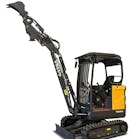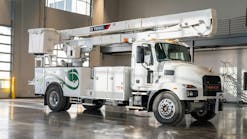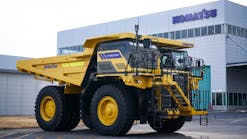The ISO4406.99 Cleanliness Code is the industry standard that measures the type, quantity, and size of contaminating particles in lubricating fluids. Permissible numbers of particles, their size, and material make-up as reported in a milliliter of fluid can indicate if the lubricant is performing well and where components may be experiencing unnecessary wear.
“Lubricant and fluid maintenance has been a hot topic for our organization over the past few years,” says Bill Orcutt, equipment superintendent for Wildcat Construction. “We have arrived at this topic while trying to manage our oil samples and in doing so, we found that our ISO cleanliness counts were less than we desire.
“At first we didn’t think that it was much of an issue, seeing no metal wear, no breakdown of the oil, and no other effects of contamination. But, after we realized that it was affecting our overall normal count percentage, we started researching and found how it affected our component life on the whole.”
As a first step to determine the root cause for his unsatisfactory oil sample test results, Orcutt began a new training program for Wildcat’s maintenance techs.
“We trained all of our PM techs on proper sampling and cleanliness practices,” he says. “Training improved the results but we were not to the level that we needed or hoped to be at.”
Orcutt was puzzled because he buys high-quality oil that is certified clean and maintains the stock in clean, dry tank trucks that have additional filtration and are frequently sampled. His next step was testing all of his bulk oil and lube truck’s storage tanks.
“To our chagrin, most of our new oil failed cleanliness code specs.” He decided to have his vendor sample its oil from their storage tanks. He also had other off-the-shelf brands of oil from other vendors and manufacturers sampled.
“To our dismay, the vendors and off-the-shelf oil samples looked very similar to the results we had from our tanks,” Orcutt said.
The journey from the lubricant manufacturer’s blending facility to the regional distributor is fraught with dirty opportunities. How the base oil is blended with additives can add unwanted air. Bulk storage tanks holding finished product need to be cleaned properly between batches and fitted with breathers to keep moisture and airborne particles from seeping into the tank.
When the lubricant is readied for the tanker truck, more opportunities for contamination can be introduced depending on the quality-control measures the truck’s owner takes, such as cleaning between loads, filtering while filling, moisture control, and protection from cross-contamination.
The final trip from the shop to the field provides even more opportunities for fluid contamination. In-house service trucks and trailers have hoses, connectors, and containers that are routinely exposed to rough weather and site conditions. Temporary fill locations are subject to humidity and temperature variations that can introduce water into field-fill system, which in turn breaks down the chemical properties of the oil/additives and introduces microbes. All this happens before the fleet technician even opens a fill port.
Orcutt decided the best way to reach the desired test levels would be by procedures put in place after the vendor delivered the oil, so he had WearCheck perform an audit on Wildcat’s storage system, lube trucks, and practices.
“WearCheck helped us put a best practices plan together,” Orcutt says. “We have since installed kidney loop filtration, desiccant breathers, and no-drip nozzles on all of our storage tanks. Our final shop delivery systems and lube trucks are equipped with filter systems as well. We have also come to agreement with our oil provider to filter all of our oil, keep it in certified clean totes, and deliver it after it meets an agreed-upon ISO cleanliness code.”





